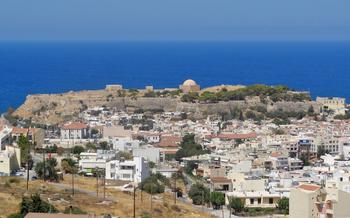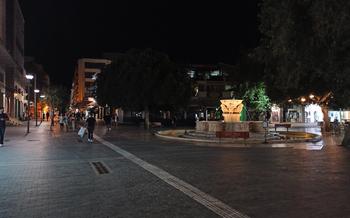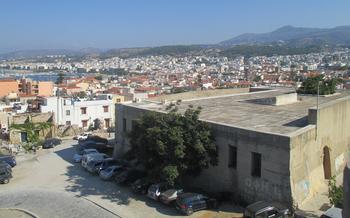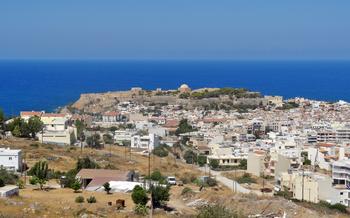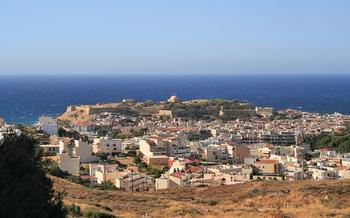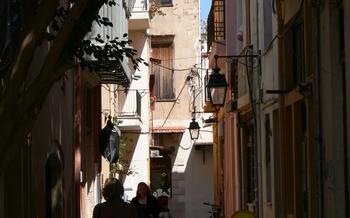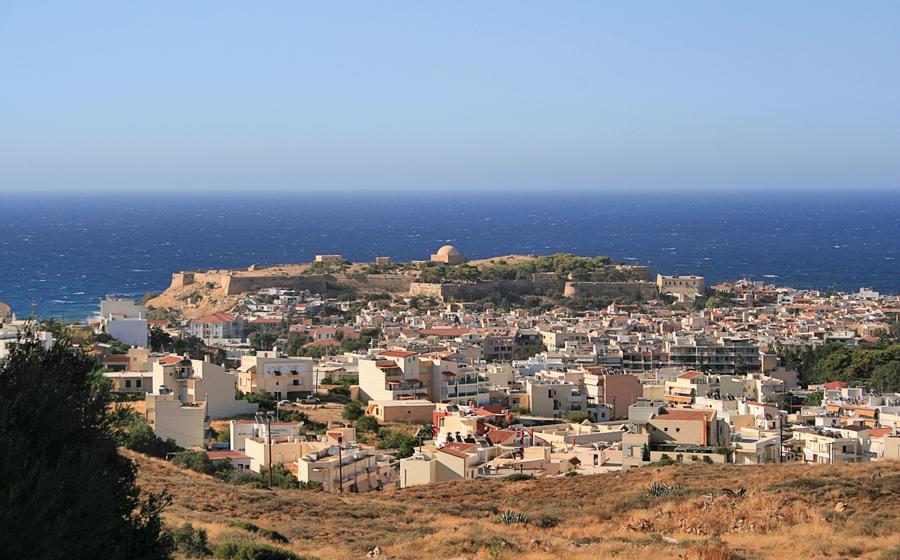
Traditional Cretan Houses
- Historical Background
- Interior Design
- Exploring the Neighborhoods
- Visiting the Houses
- Museums and Cultural Centers
- Local Crafts and Artisans
- Festivals and Events
- Culinary Delights
- Sustainable Tourism
- Local People and Stories
- Photography Tips
- Recommended Tours and Guides
- Insider Tip
Historical Background
Rethymno, a city on the north coast of Crete, boasts a rich history that has shaped the unique character of its traditional houses. Rethymno was under Venetian rule from the 13th to the 17th centuries, and this period significantly influenced the architecture of the city. The Venetians introduced new building techniques and architectural styles, such as the use of stone and arched doorways, which became characteristic features of traditional Cretan houses.
During the Ottoman period from the 17th to the 19th centuries, Rethymno experienced a blending of Eastern and Western influences, which further enriched its architectural heritage. The Ottomans introduced elements such as interior courtyards, decorative plasterwork, and intricate tilework, which added a unique charm to the traditional houses.
These traditional houses played a vital role in the local community and economy. They were not just living spaces but also served as workshops for artisans, shops for merchants, and meeting places for the community. The central courtyard often functioned as a social hub, where families gathered for meals, celebrations, and storytelling.
Interior Design
The interiors of traditional Cretan houses reflect a harmonious blend of functionality and aesthetics. Furnishings are typically simple and rustic, crafted from local materials like wood and stone. Handwoven rugs, kilims, and textiles adorn the floors and walls, adding a touch of warmth and color. Pottery, ceramics, and copperware are commonly used for decoration, showcasing the skills of local artisans.
The layout of the rooms is designed to maximize natural light and ventilation. Windows are often placed strategically to capture the gentle breezes that flow through the hills and valleys. The central courtyard serves as a multifunctional space, providing a shaded area for relaxation, dining, and household chores. It is often surrounded by a covered veranda or loggia, offering additional outdoor living space.
The fireplace is a central feature of the traditional Cretan house. It serves as a source of heat during the winter months and a gathering place for family and friends to share stories, laughter, and meals. The mantel above the fireplace is often decorated with religious icons, family heirlooms, and other cherished possessions.
Exploring the Neighborhoods
The charm of traditional Cretan houses is best experienced by exploring the neighborhoods where they are concentrated. The old town of Rethymno is a treasure trove of these architectural gems, with narrow cobblestone streets lined with houses showcasing Venetian and Ottoman influences. Wander through the alleys and discover hidden courtyards, adorned with colorful flowers and fragrant jasmine.
For a more structured experience, join a guided walking tour that takes you through the most notable neighborhoods and provides insights into their history and architecture. These tours often include visits to the interiors of traditional houses, offering a glimpse into the lives of past residents.
Capture the essence of these neighborhoods through photography, experimenting with different angles and perspectives to convey their unique character. Don't forget to engage with the locals, who are always happy to share stories and anecdotes about their homes and community.
Along your exploration, take advantage of the local markets, shops, and eateries to immerse yourself in the vibrant culture of Rethymno. Support local businesses by purchasing handmade souvenirs and savoring traditional Cretan cuisine at family-run tavernas, where you can indulge in delicious dishes prepared with fresh, local ingredients.
Visiting the Houses
When visiting traditional Cretan houses, it is essential to be mindful of local customs and etiquette. Always ask for permission before entering a private residence, and be respectful of the privacy of the occupants. Guided tours or workshops are an excellent way to learn more about the history and architecture of these houses, as they often provide insights into the lives of past residents.
For a truly immersive experience, consider staying in a traditional Cretan house. Several guesthouses and vacation rentals offer this unique accommodation option, allowing visitors to experience the charm and character of these historic dwellings firsthand. When choosing a place to stay, look for properties that have been carefully restored and maintained to preserve their authenticity.
To find the most authentic and well-preserved traditional Cretan houses to visit, it is best to explore the quieter neighborhoods away from the main tourist areas. These hidden gems often showcase the true essence of Cretan architecture and culture. Locals are usually happy to share their knowledge and point you in the right direction, so don't hesitate to ask for recommendations.
Museums and Cultural Centers
Rethymno is home to several museums and cultural centers dedicated to showcasing traditional Cretan architecture and culture. These institutions offer a deeper dive into the history, design, and significance of traditional Cretan houses.
One notable museum is the Traditional Cretan House Museum, located in the heart of the Old Town. This museum is housed in a beautifully preserved 19th-century Cretan house and provides visitors with a glimpse into the daily lives of past residents. The museum features exhibits on traditional furniture, textiles, tools, and household items, offering insights into the customs and traditions of Cretan families.
Another must-visit is the Historical and Folklore Museum of Rethymno, which houses a collection of artifacts and exhibits related to the history and culture of the region. Here, you can learn about the Venetian and Ottoman influences on traditional Cretan architecture, as well as the role of traditional houses in the local economy and society.
These museums and cultural centers provide a valuable opportunity to delve deeper into the fascinating world of traditional Cretan houses and gain a better understanding of their cultural significance.
Local Crafts and Artisans
Traditional crafts play a vital role in preserving the cultural heritage of Rethymno. Artisans specializing in pottery, weaving, woodworking, and leatherworking perpetuate ancient techniques passed down through generations. In their workshops, visitors can witness the creation of exquisite handmade items, from intricately painted ceramics to finely woven textiles. These artisans not only preserve traditional skills but also infuse their creations with a unique contemporary aesthetic. By supporting local crafts, visitors contribute to the sustainability of these traditions and the livelihoods of the artisans who keep them alive. Workshops and demonstrations provide an opportunity to learn about the processes and techniques involved, making for a truly immersive cultural experience.
Festivals and Events
The vibrant culture of Crete is brought to life during traditional festivals and events that celebrate the island's rich heritage. These events provide a unique opportunity to witness the passion and authenticity of Cretan culture firsthand. Immerse yourself in the lively atmosphere as locals and visitors come together to showcase traditional music, dance, and cuisine. Experience the infectious rhythms of Cretan music and the graceful movements of traditional dances, such as the Pentozali and the Syrtos. Savor the mouthwatering flavors of Cretan cuisine, featuring fresh, local ingredients and simple yet delicious cooking methods.
Don't miss the chance to attend one of the many festivals dedicated to traditional crafts and skills. These events showcase the incredible talent of local artisans who specialize in creating handmade items using techniques passed down through generations. Witness the intricate weaving of intricate textiles, the shaping of beautiful pottery, and the delicate carving of wood. Participate in workshops and demonstrations to learn about these traditional crafts and even try your hand at creating your own unique souvenir.
To fully immerse yourself in the cultural richness of Crete, time your visit to coincide with one of these festivals or events. Check local calendars or ask your accommodation for recommendations. Embrace the opportunity to connect with locals, learn about their customs, and create lasting memories of your time in Rethymno.
Culinary Delights
Traditional Cretan cuisine is an integral part of the local lifestyle, showcasing fresh, seasonal ingredients and simple cooking methods that have been passed down through generations. Traditional dishes often feature locally sourced produce, such as olive oil, fresh vegetables, herbs, and cheeses, which are combined to create flavorful and wholesome meals.
One of the highlights of Cretan cuisine is its emphasis on fresh seafood, reflecting the island's proximity to the Mediterranean Sea. Grilled fish, octopus, and calamari are popular choices, often served with a drizzle of olive oil and lemon juice to enhance their natural flavors. Meat lovers can indulge in traditional dishes like lamb roasted with potatoes or slow-cooked goat in a rich tomato sauce.
For vegetarians, there is a plethora of options to choose from. Traditional Cretan salads, known as "dakos," are a must-try, featuring ripe tomatoes, cucumbers, onions, and crumbled feta cheese served on barley rusks. Stuffed vegetables, such as tomatoes and peppers filled with rice, herbs, and spices, are another delicious and nutritious option.
No meal in Crete is complete without a taste of the local cheeses. From the creamy "graviera" to the sharp and tangy "mizithra," there is a cheese to suit every palate. These cheeses are often paired with honey or fruit, creating a delightful balance of flavors.
To fully immerse yourself in the Cretan culinary experience, visit family-run tavernas and restaurants that serve authentic dishes prepared with local ingredients. These tavernas often have a warm and welcoming atmosphere, allowing you to savor the flavors of Crete while connecting with the local culture.
Cooking classes or workshops are another great way to learn about traditional Cretan cuisine. These classes provide hands-on experience in preparing classic dishes, using fresh ingredients and traditional techniques. You'll not only learn to cook delicious Cretan food but also gain insights into the culinary traditions of the island.
Sustainable Tourism
Responsible tourism is crucial for preserving the traditional Cretan culture and the unique charm of its traditional houses.
As a traveler, you can contribute to sustainable tourism by following these guidelines:
-
Minimize your environmental impact by walking, cycling, or using public transportation to explore Rethymno.
-
Support local businesses that use sustainable practices and promote traditional Cretan culture.
-
Choose eco-friendly accommodation options, such as traditional Cretan houses that have been renovated using sustainable materials and techniques.
-
Reduce your waste by bringing your own reusable water bottle, shopping bags, and containers for leftovers.
-
Be respectful of the local community by observing local customs and traditions, and by asking permission before taking photos of people or their homes.
By practicing sustainable tourism, you can help ensure that the traditional Cretan houses and the unique cultural heritage of Rethymno are preserved for future generations.
Local People and Stories
Engaging with the locals of Rethymno is a crucial part of understanding the significance of traditional Cretan houses. Their stories and experiences provide a deeper insight into the culture, traditions, and way of life that have shaped these architectural gems.
In the heart of the old town, you'll find elderly residents who have spent their entire lives within the walls of these traditional houses. They can share tales of their childhood, family traditions, and the changes they've witnessed over the years. Their anecdotes offer a glimpse into the rich tapestry of Rethymno's past.
Traditional Cretan houses have played a vital role in preserving community bonds and traditions. They were often built close together, creating a sense of togetherness and interdependence among neighbors. Families would gather in the central courtyard to share meals, celebrate festivals, and support each other through life's challenges.
To truly immerse yourself in the local culture, consider participating in cultural exchange programs or volunteering in the community. These experiences provide opportunities to connect with locals on a deeper level, learn traditional skills, and contribute to the preservation of Rethymno's heritage.
Photography Tips
Capturing the essence of traditional Cretan houses through photography is a delightful way to preserve your memories and share the beauty of these architectural wonders with others. Here are some photography tips to help you capture the best shots:
-
Embrace Natural Light: Utilize the beautiful Mediterranean light to your advantage. Shoot during the golden hours of sunrise or sunset to capture the warm glow that enhances the textures and colors of the houses.
-
Play with Angles: Don't just shoot from eye level. Experiment with different angles to create more dynamic compositions. Try shooting from below to emphasize the height of the houses or from above to capture the intricate details of the rooftops.
-
Focus on Details: Traditional Cretan houses are rich in intricate details. Zoom in to capture the textures of the stone walls, the carvings on the wooden doors, and the patterns on the colorful tiles.
-
Frame Your Shots: Use the surrounding environment to frame your shots. Incorporate elements like trees, flowers, or even people to add depth and context to your images.
-
Tell a Story: Think about the story you want to tell with your photographs. Capture the essence of the houses by including people interacting with them, showing traditional activities, or highlighting unique architectural features.
Recommended Tours and Guides
When exploring the traditional Cretan houses in Rethymno, consider joining a guided tour or walking route led by knowledgeable local guides. These experts can provide valuable insights into the history, architecture, and cultural significance of the houses. Look for reputable and experienced tour operators who offer itineraries that showcase the most significant examples and neighborhoods. A knowledgeable guide can bring the stories and traditions of these houses to life, enhancing your understanding and appreciation of this unique aspect of Rethymno's heritage.
Insider Tip
Venture beyond the main tourist areas to discover hidden gems among traditional Cretan houses. Explore the charming village of Argiroupoli, nestled amidst lush greenery, where you'll find picturesque houses adorned with colorful bougainvillea.
-
For a truly authentic experience, time your visit to coincide with one of the many traditional festivals held throughout the year. Immerse yourself in the vibrant atmosphere as locals celebrate their heritage through music, dance, and culinary delights.
-
To fully grasp the essence of traditional Cretan houses, visit during the shoulder seasons, when the weather is pleasant, and the crowds are smaller. This allows you to connect with locals more easily and delve deeper into the history and culture of the region.
-
Enhance your understanding of Cretan architecture and lifestyle by delving into books, documentaries, or online resources. These can provide valuable insights and context, making your exploration even more meaningful.

